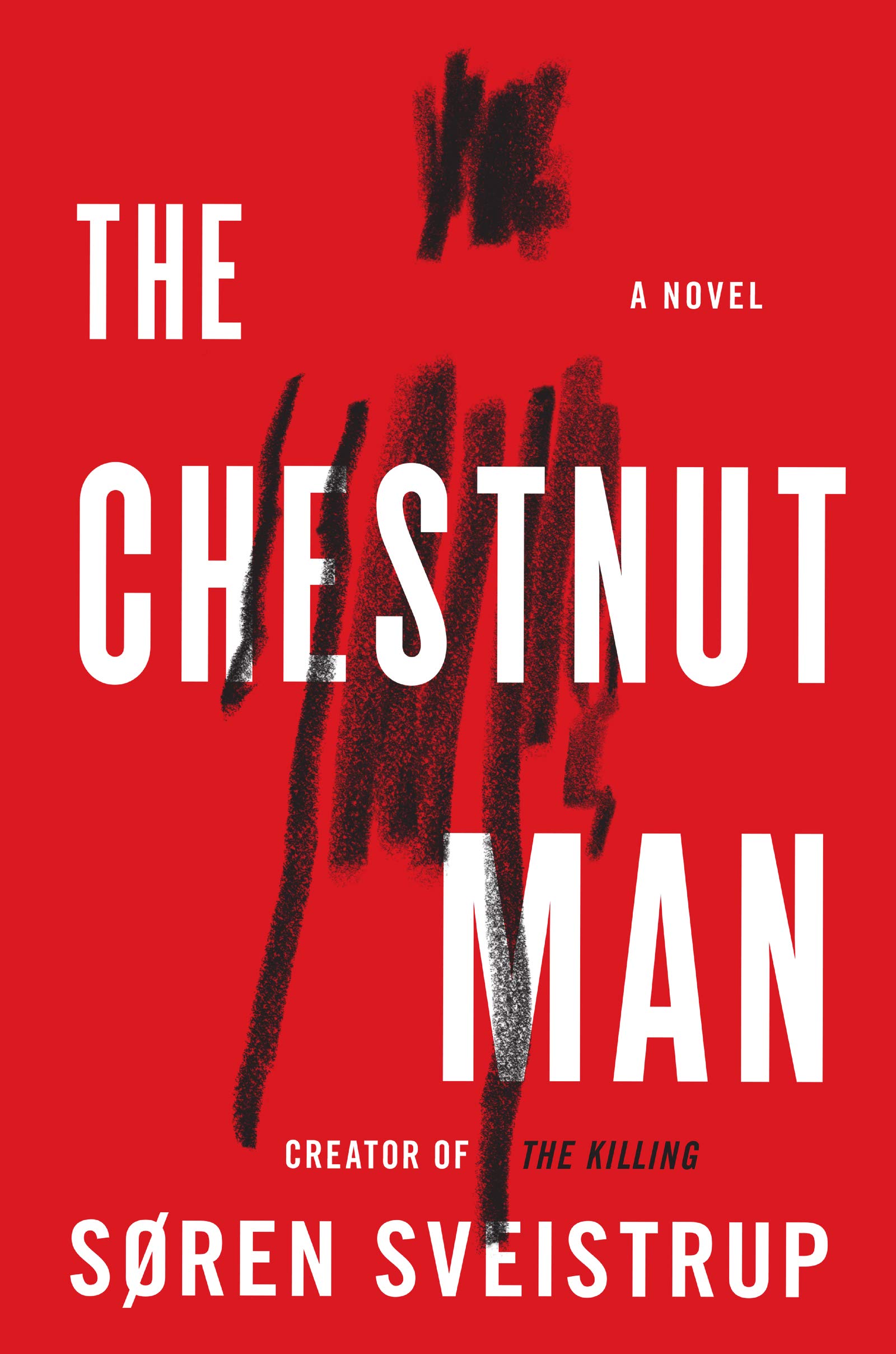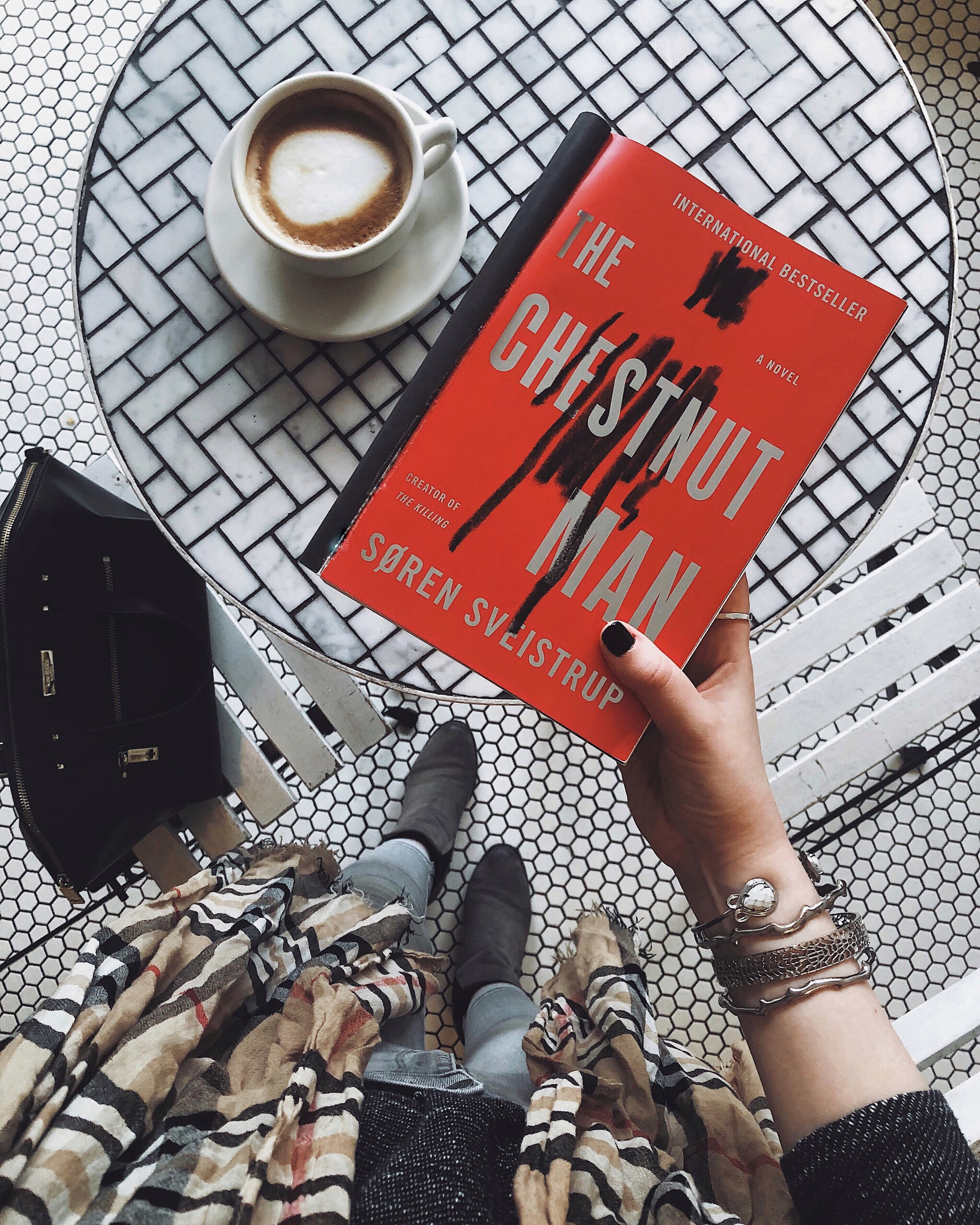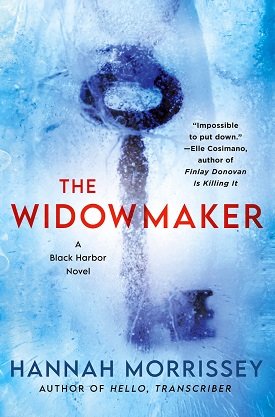Author Q&A: Søren Sveistrup
THE CHESTNUT MAN
I’m thrilled to welcome Søren Sveistrup to Crime by the Book today to give CBTB readers an inside glimpse into one of the season’s hottest thrillers: THE CHESTNUT MAN. Søren’s debut novel is garnering incredible buzz, and the read lives up to the hype. In THE CHESTNUT MAN, an unlikely duo of police officers in Copenhagen, Denmark must track down a brutal killer with a chilling calling card - “chestnut men,” dolls crafted out of chestnuts and matchsticks. THE CHESTNUT MAN is a big, layered, intricate crime novel—the kind of story that Nordic Noir dreams are made of. With harrowing, clever plotting and made-for-television tension and drama, THE CHESTNUT MAN will thrill fans of Jo Nesbo and Stieg Larsson. Søren Sveistrup is the creator of the hit television show The Killing, and THE CHESTNUT MAN is his debut novel. Read on for the inside scoop on THE CHESTNUT MAN, including plot details, a snippet from my full review, and my conversation with the author.
THE CHESTNUT MAN By Søren Sveistrup
Book Details:
IF YOU FIND ONE,
HE’S ALREADY FOUND YOU
A psychopath is terrorizing Copenhagen.
His calling card is a “chestnut man”—a handmade doll made of matchsticks and two chestnuts—which he leaves at each bloody crime scene.
Examining the dolls, forensics makes a shocking discovery—a fingerprint belonging to a young girl, a government minister’s daughter who had been kidnapped and murdered a year ago.
A tragic coincidence—or something more twisted?
To save innocent lives, a pair of detectives must put aside their differences to piece together the Chestnut Man’s gruesome clues.
Because it’s clear that the madman is on a mission that is far from over. And no one is safe.
From CBTB’s Review:
One of the season’s most hotly-anticipated new thrillers is finally here. From the mind that created the sensational television show The Killing now comes an equally-gripping - and equally-chilling - Nordic thriller: THE CHESTNUT MAN. In his debut crime novel, Søren Sveistrup instantly establishes himself as a must-read author for fans of Nordic Noir legends Jo Nesbø and Lars Kepler—and, for that matter, as a must-read for any reader who just wants a gripping thriller to sink their teeth into this fall. THE CHESTNUT MAN is good, old-fashioned Scandinavian crime fiction; it’s a hefty book, clocking in at 528 pages in the American hardcover edition, and immerses the reader in an intricate plot moving from the mundane details of police work to the cinematic (and gruesome) crimes of a twisted killer. If the plot of THE CHESTNUT MAN seems a bit familiar at first glance, don’t worry; Sveistrup sets up his debut novel in well-tread territory, but it quickly separates itself from the pack with richly-drawn characters, made-for-TV pacing, and, naturally, a killer with a modus operandi so sinister, you’ll want to read this book with all the lights on. The buzz surrounding the publication of THE CHESTNUT MAN has been significant; it’s earned incredible pre-publication praise, is a September Book of the Month Club selection, and is soon to be a Netflix original series. The buzz is warranted here; Sveistrup’s debut is a must-read for the crime reader looking for a big, bold, spend-all-day-reading thriller. | Continue Reading
Author Q&A: Søren Sveistrup
THE CHESTNUT MAN
Crime by the Book: I feel like we should start at the very beginning here. You and I actually met at the fantastic Danish crime festival Krimimessen Horsens! I thought you were so kind, and then I got home to the US and read The Chestnut Man and… this book is so dark! Where does a nice guy like yourself get these twisted ideas?
Søren Sveistrup: Thank you - likewise. Nice to meet you again. Yes, it was fun in Horsens - my first visit at Krimimessen (The Danish Crime Fair). Hope you’re well. And thank you for mentioning my book in your blog!
I prefer my stories to be challenging to my main characters, and I guess that’s why I tend to like the ”dark”. My characters should be up against something monstrous, so why not worst case scenarios? Actually I find that many fictional crime plots could be solved by the detectives in an afternoon and I guess I’m just the sort of writer who prefer the cases to be very complex – cases that demand a lot from the investigators. Of course I’m also tainted by my background and personality. Originally I’m from a small island in the south of Denmark – from a middle class home (my Mom was a teacher, my Dad was a children’s psychologist). My Dad read a lot, mostly crime or books about painters, and one day I picked up one of his crime novels and I was immediately hooked - especially the whodunnits by Agatha Christie. My interest was reinforced by the fact that my family had many secrets, and later on, unfortunately, I had my share of family deaths and tragedies, so those things have marked me, too. Finally, the book is inspired by some horrible events featured in the Danish news during the time I wrote The Chestnut Man.
CBTB: The Chestnut Man follows two very different police officers in Copenhagen, Denmark, who are on the trail of a vicious serial killer. Tell us about your story’s protagonists - who are they, and how would you describe them to someone meeting them for the first time?
SS: Naia Thulin is the sort of detective you would always like to have by your side in any criminal case. Simply because she’s smarter than the rest. She’s also a nuisance because she knows this and because she isn’t looking to get friends. She’s young and ambitious and until now life has taught her not to trust people and to do things herself. When it comes to emotions she thinks it’s better not to show them – she’s very self-protective and protective towards her little daughter, too. She feels a need to be structured and in control, and she has reduced her romantic life to casual sex.
Mark Hess is a mess. Normally he’s working at Europol in The Hague, a lonely wolf, with no apparent friends or family. For a number of reasons he doesn’t care about much anymore, not even himself. He goes with the flow and has reached a point where he’s numb to the cases he investigates. He used to be a brilliant investigator and used to have a lot of empathy but now he seems burned out and selfish. At least until he stumbles upon Thulin and the special case of the chestnut man. Deep down Hess has a big heart for the weak and vulnerable but the criminal cases tend to absorb him.
CBTB: One of the hallmarks of a great crime novel is a compelling and creepy villain, and The Chestnut Man has exactly that! Tell us about your story’s “bad guy.” How did you come up with the concept for this serial killer, and what made you interested in this character?
SS: In fact there’s more than one bad guy in The Chestnut Man but I know who you are referring to. When it comes to that character, I pictured my worst nightmare and tried to think of a good reason why anyone could ever behave like that. It was essential to me that the person had an understandable logic and reasoning and weren’t just behaving like a nutcase. Also, when it comes to the doings of this bad guy, I was very inspired by the way a chestnut man looks - what it consists of and how it’s put together. And finally, when you write a story about small chestnut dolls, it goes without saying that you have to have a puppet master in the story, too.
CBTB: Let’s talk about the inspiration behind your book’s title. For readers who might not be familiar with the concept, what are these chestnut men? Why were they the perfect calling card for your killer?
SS: It’s an annual tradition in Denmark: Each Autumn, when the chestnuts fall from the trees, children assemble small chestnut dolls out of chestnuts and matches and display them in windows, class rooms or the like. It’s a nice cozy children’s game. One Autumn day a few years ago I came to pick up my youngest in kindergarten and I saw the kids assembling chestnut men while they were singing a children’s song: ”Chestnut man, do come in, Chestnut man, do come in”. To me the invitation sounded creepy even though the context was so innocent. Or maybe exactly because the context was innocent. Anyway, I decided to follow my anxieties and use the small doll as a signature on a scene of crime.
“I prefer my stories to be challenging to my main characters, and I guess that’s why I tend to like the ‘dark.’ My characters should be up against something monstrous, so why not worst case scenarios?” -Søren Sveistrup
CBTB: You set The Chestnut Man in Copenhagen, where you live. Tell us about Copenhagen - what made this beautiful city the perfect location for such a chilling thriller?
SS: First of all, I like Copenhagen very much. The city is more than a thousand years old but the last few decades it has been changing more and more into a very modern and fancy European capital. The modern Scandinavian architecture and design are almost obvious and the style appears perfect and flawless. On one hand I like it a lot, on the other hand I think there’s something scary and alienating about it. Maybe it’s the coolness of the style. Or the pureness. It’s as if it expresses Nordic urban civilization at its finest, but at the same time suppresses nature. It’s a big contrast to the fields and the forests outside the city borders.
CBTB: You are perhaps best known as the creator of the brilliant crime TV show The Killing. How did you make the shift from TV to novel writing? Was writing a novel always a long-term goal for you?
SS: It was a long-term goal I guess. I studied Literature at The University of Copenhagen before I attended the Danish Film School, but back then I didn’t have the tools to write a novel. After writing TV-series and films I wanted to do something for myself. As a scriptwriter, or even as a showrunner, you are a part of a team and you have many fruitful discussions with your colleagues, not least about budget and taste. It’s great and I love it but sometimes you just want to go your own ways. Actually, it surprised me how lonely the writing process was and I have gained a lot of respect for authors and their discipline.
CBTB: How has your background in television informed your writing? Are there any major lessons from your time working in TV that you applied to The Chestnut Man?
SS: Not really. I worked the same way as always. But the importance of language was of course the biggest difference. How accurate you must describe things and so on.
CBTB: Nordic Noir has a dedicated fan-base around the world (myself included!). Do you have any theories on what makes Scandinavian crime novels special?
SS: The Scandinavians are a very friendly people so I wish I was the one with a clever answer to why we tend to write these special crime novels, but I am not.
Maybe it’s because we live in one of the best welfare systems in the world and from the outside, appears to have no serious problems, though reality is that they are all being shoved under the carpet.
A wealthy society like the Scandinavian means that everything looks good and perfect. But of course we have cracks in the surface and maybe Scandinavians sometimes feel a greater need to hide this away because of the seemingly perfect facade. A bit like the never-ending competition on Instagram and Facebook that makes it hard for people to admit that their lives are not always perfect and happy-happy. This kind of mental dishonesty accumulates anxieties, depression and sometimes even violence – which often seem to be the fuel for Scandinavian crime novels. Maybe that’s why ☺
CBTB: What are you working on next?
SS: At the moment I’m working on a follow up story to The Chestnut Man.
Many thanks to Søren Sveistrup for taking the time to answer my questions! His debut novel The Chestnut Man is available now at your favorite bookstore or library.
Book Details:
Hardcover: 528 pages
Publisher: Harper; Reprint edition (September 3, 2019)
Language: English
ISBN-10: 0062895362
Crime by the Book is a participant in the Amazon Services LLC Associates Program, an affiliate advertising program designed to provide a means for sites to earn advertising fees by advertising and linking to Amazon.com. This in no way affects my opinion of the books included in this post.















Home ownership feel like a distant dream? Zillow listings have you convinced you’ll be renting for the rest of your life? The woman at the heart of Carissa Orlando’s debut The September House feels your pain—and she’s prepared to put up with a lot if it means she and her husband can finally have a place to call their own. In this case, that might just mean living in a house that’s haunted. Playful and irreverent, spine-tingling and spooky, The September House puts a fresh spin on the classic haunted house story, delivering an immersive tale about the secrets lurking within one building’s walls, and within the lives of its inhabitants.